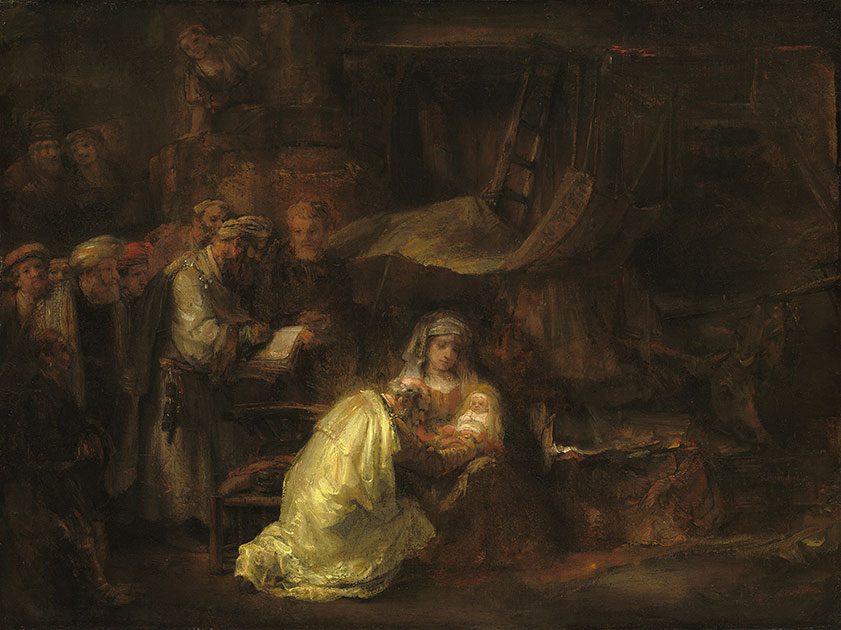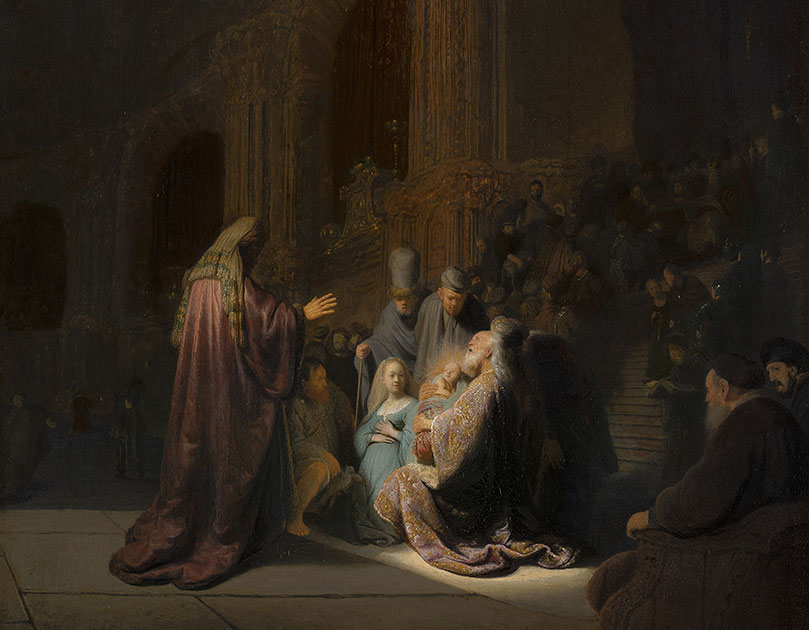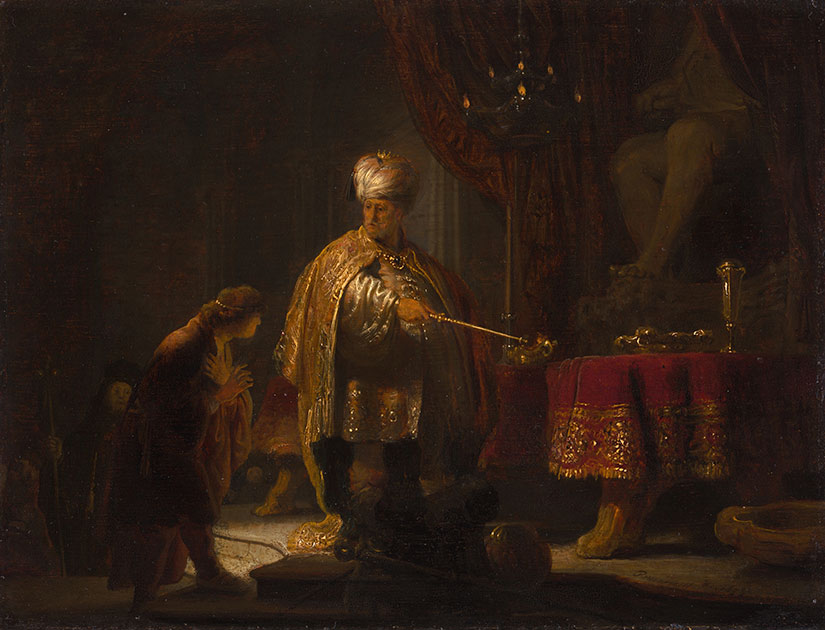-
-full.webp)
Old Woman Reading (1631)
A tender portrait of an elderly woman engrossed in a book, her face glowing against a shadowy backdrop.
-
 (1632)-full.webp)
Man in Oriental Costume (The Noble Slav) (1632)
A mysterious figure in opulent Eastern attire emerges from darkness, his expression blending pride and melancholy.
-

The Circumcision (1661)
Rembrandt’s portrayal of Jesus’ circumcision captures the blend of humanity and divinity with emotional depth.
-

Simeon’s Song of Praise (1631)
“Simon’s Song of Praise,” painted in 1631, depicts an elderly Simeon in the temple, overwhelmed with joy upon seeing the infant Jesus, bathed in divine light. The scene is filled with emotion and drama, particularly through the contrast of light and shadow, which symbolizes the divine presence. Simeon’s posture and expression convey praise for God […]
-

Daniel and Cyrus Before the Idol Bel (1633)
Rembrandt vividly captures the dialogue between Daniel and Cyrus before the idol Bel through contrasting light and shadow.
-full.webp)
-full.webp)